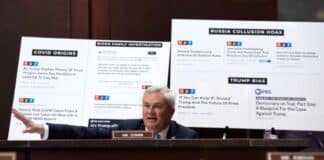President Donald Trump announced on March 26, 2025, the implementation of a 25% tariff on imported automobiles, effective April 3. The administration projects this measure will generate approximately $100 billion annually in tax revenue and aims to encourage automakers to increase production within the United States.
The tariffs will apply to all foreign-made passenger vehicles and certain auto parts, including engines and transmissions. Parts compliant with the U.S.-Mexico-Canada Agreement (USMCA) may remain exempt until a new process is established. This policy is part of a broader strategy to address trade imbalances and bolster domestic manufacturing.
Major automakers with global supply chains, such as General Motors, Ford, and Stellantis, may face increased production costs due to the tariffs. Shares in General Motors fell roughly 3%, while Stellantis experienced a nearly 3.6% drop following the announcement. Economists warn that these tariffs could lead to higher vehicle prices for consumers, potentially increasing the average auto price by up to $12,500.
The policy has elicited strong reactions from international leaders. Canadian Prime Minister Mark Carney condemned the tariffs as a “direct attack” on Canadian autoworkers and announced a $1.4 billion strategic response fund to protect jobs in the Canadian auto industry.
While the administration asserts that the tariffs will stimulate domestic manufacturing and job creation, critics argue that they may disrupt global supply chains and lead to increased costs for both producers and consumers.
President Trump’s 25% auto tariff is a bold move to restore America’s manufacturing strength and protect American jobs. Many foreign automakers have enjoyed unfair advantages, outsourcing production while reaping the benefits of U.S. consumers.





